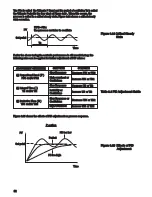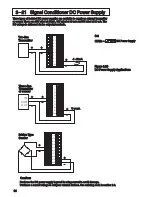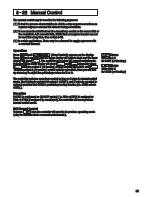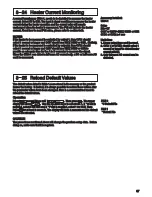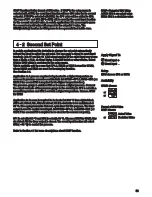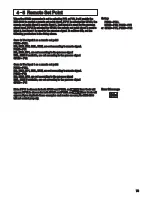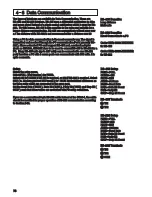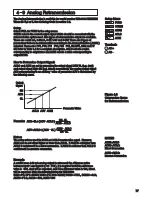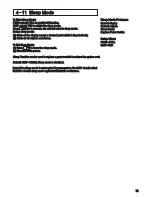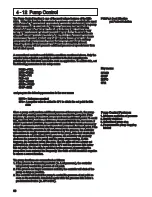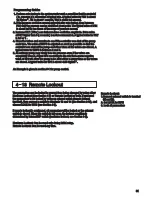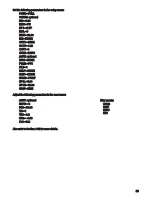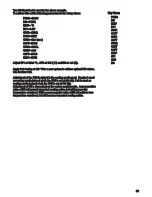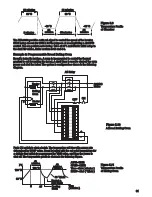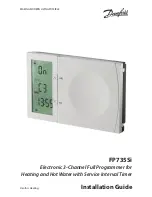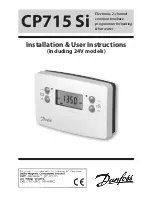
76
4 8 Data Communication
4 8 Data Communication
Two types of interfaces are available for Data Communication. These are
and
interface. RS-485 uses a differential architecture to drive
and sense signal instead of a single ended architecture which is used for RS-
232. For this reason, RS-485 is less sensitive to the noise and suitable for a
longer distance communication. RS-485 can communicate without error over
a 1 km distance while RS-232 is not recommended for a distance over 20
RS-485
RS-232
Two types of interfaces are available for Data Communication. These are
and
interface. RS-485 uses a differential architecture to drive
and sense signal instead of a single ended architecture which is used for RS-
232. For this reason, RS-485 is less sensitive to the noise and suitable for a
longer distance communication. RS-485 can communicate without error over
a 1 km distance while RS-232 is not recommended for a distance over 20
RS-485
RS-232
Using a PC for data communication is the most economic way. The signal is
transmitted and received through the PC communication Port ( generally RS-
232 ). Since a standard PC can't support RS-485 port, a network adaptor
(such as
) has to be used to convert RS-485 to RS-232 for a
PC. Many RS-485 units (up to 247 units) can be connected to one RS-232
port; therefore a PC with 4 comm ports can communicate with 988 units. It is
quite economic.
SNA10A, SNA10B
Using a PC for data communication is the most economic way. The signal is
transmitted and received through the PC communication Port ( generally RS-
232 ). Since a standard PC can't support RS-485 port, a network adaptor
(such as
) has to be used to convert RS-485 to RS-232 for a
PC. Many RS-485 units (up to 247 units) can be connected to one RS-232
port; therefore a PC with 4 comm ports can communicate with 988 units. It is
quite economic.
SNA10A, SNA10B
RS-485 Benefits:
RS-485 Benefits:
Long distance
Long distance
RS-232 Benefits:
RS-232 Benefits:
Direct Connection to a PC
Direct Connection to a PC
Order ETR-8300-XXXXXX2
Order ETR-8300-XXXXXX2
for RS-232
for RS-232
Order ETR-8300-XXXXXX1
Order ETR-8300-XXXXXX1
for RS-485
for RS-485
Setup
Enters the setup menu.
Select FULL ( Full function ) for FUNC.
Select 485 for COMM if RS-485 is required, or 232 if RS-232 is required. Select
RTU ( ie. Modbus protocol RTU mode ) for PROT. Set individual addresses as
for those units which are connected to the same port.
Set the Baud Rate ( BAUD ), Data Bit ( DATA ), Parity Bit ( PARI ) and Stop Bit (
STOP ) such that these values are accordant with PC setup conditions.
Enters the setup menu.
Select FULL ( Full function ) for FUNC.
Select 485 for COMM if RS-485 is required, or 232 if RS-232 is required. Select
RTU ( ie. Modbus protocol RTU mode ) for PROT. Set individual addresses as
for those units which are connected to the same port.
Set the Baud Rate ( BAUD ), Data Bit ( DATA ), Parity Bit ( PARI ) and Stop Bit (
STOP ) such that these values are accordant with PC setup conditions.
RS-485 Setup
RS-485 Setup
RS-232 Setup
RS-232 Setup
FUNC=FULL
COMM=485
PROT=RTU
ADDR=Address
BAUD=Baud Rate
DATA=Data Bit Count
PARI=Parity Bit
STOP=Stop Bit Count
FUNC=FULL
COMM=485
PROT=RTU
ADDR=Address
BAUD=Baud Rate
DATA=Data Bit Count
PARI=Parity Bit
STOP=Stop Bit Count
FUNC=FULL
COMM=232
PROT=RTU
ADDR=Address
BAUD=Baud Rate
DATA=Data Bit Count
PARI=Parity Bit
STOP=Stop Bit Count
FUNC=FULL
COMM=232
PROT=RTU
ADDR=Address
BAUD=Baud Rate
DATA=Data Bit Count
PARI=Parity Bit
STOP=Stop Bit Count
RS-485 Terminals
RS-485 Terminals
13
14
TX1
TX2
RS-232 Terminals
RS-232 Terminals
13
14
10
TX1
TX2
COM
Multi-units
If you use a conventional 9-pin RS-232 cable instead of the CC94-1, the cable
should be modified for proper operation of RS-232 communication according
to Section 2-16.
If you use a conventional 9-pin RS-232 cable instead of the CC94-1, the cable
should be modified for proper operation of RS-232 communication according
to Section 2-16.

